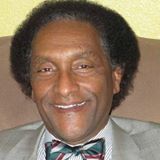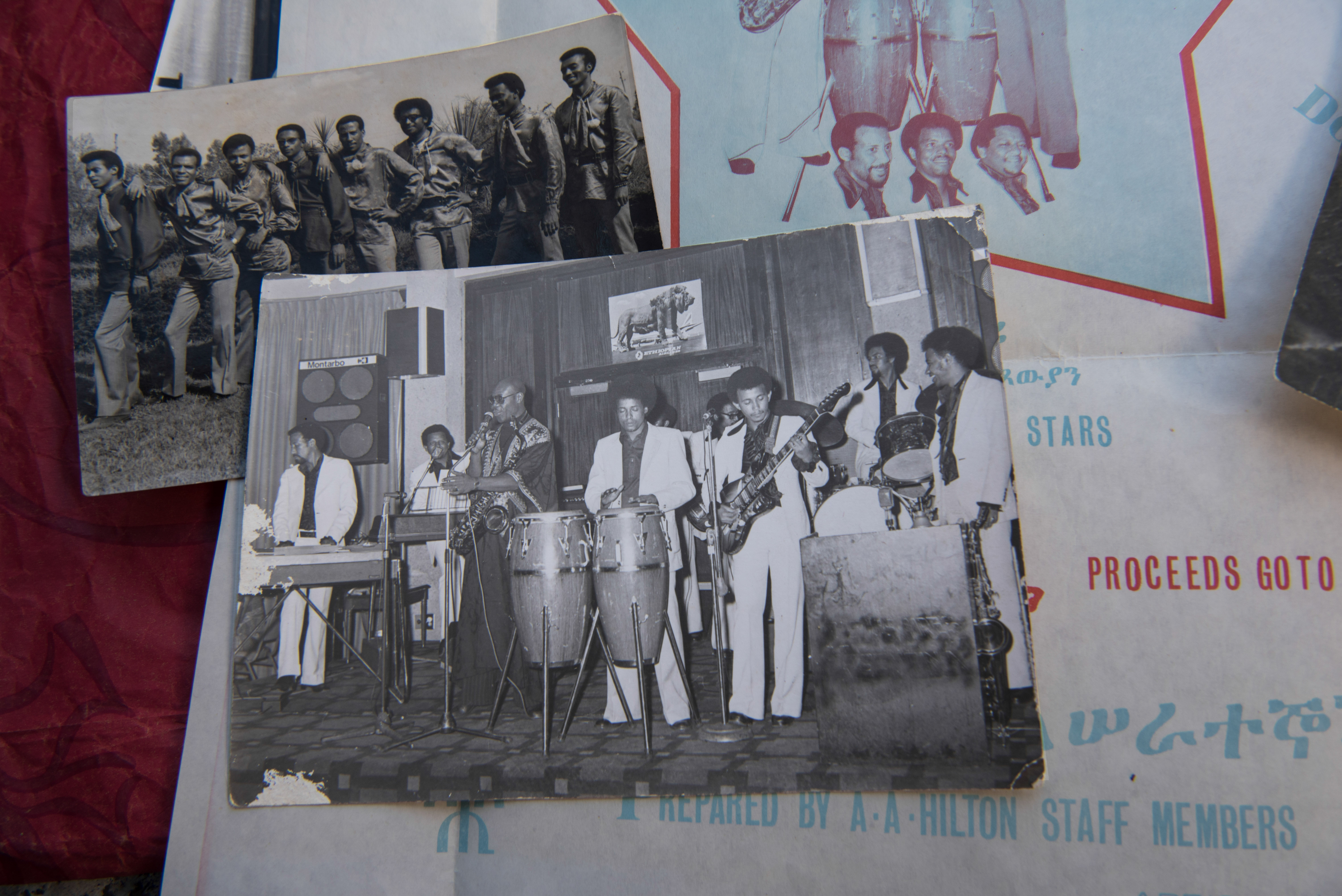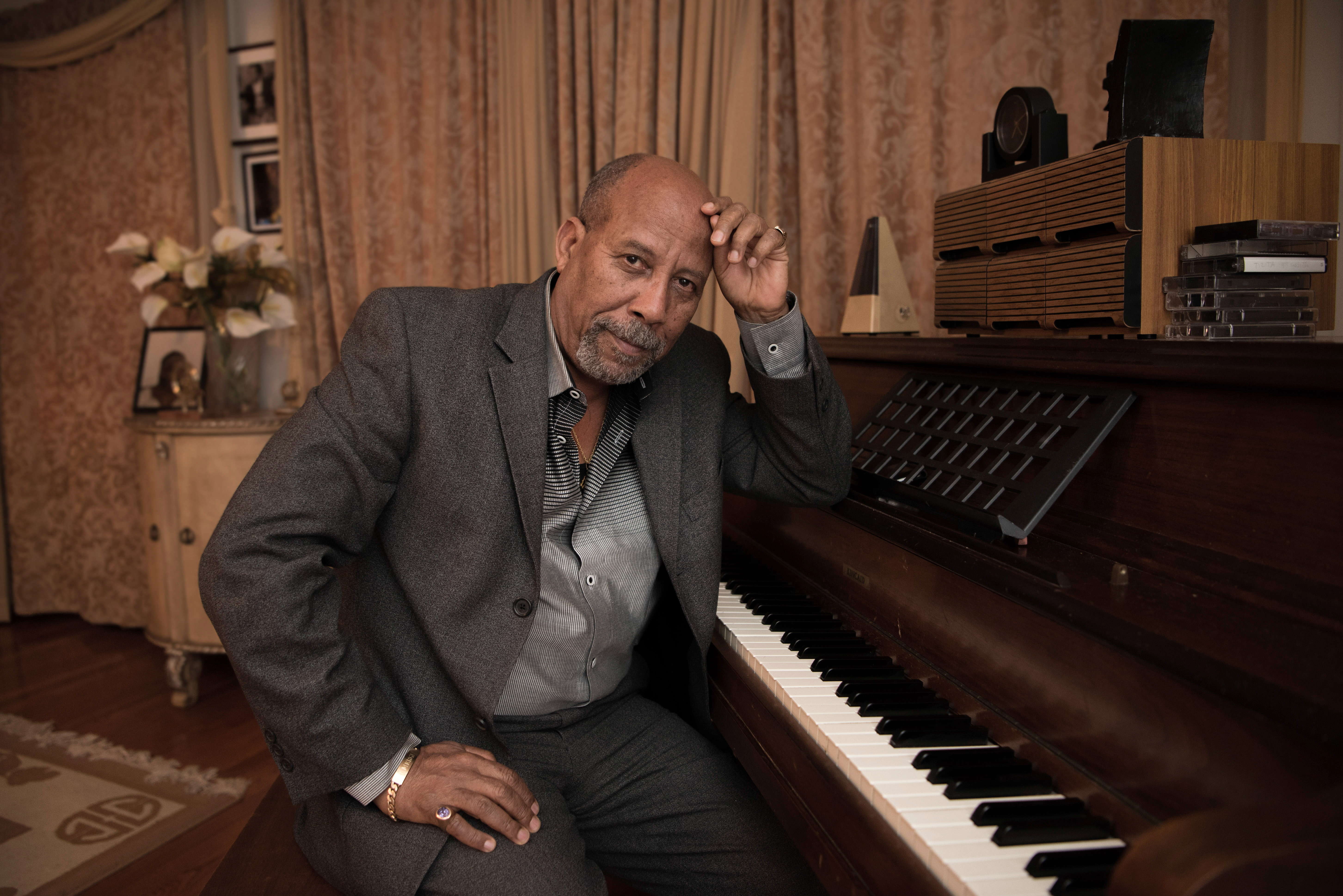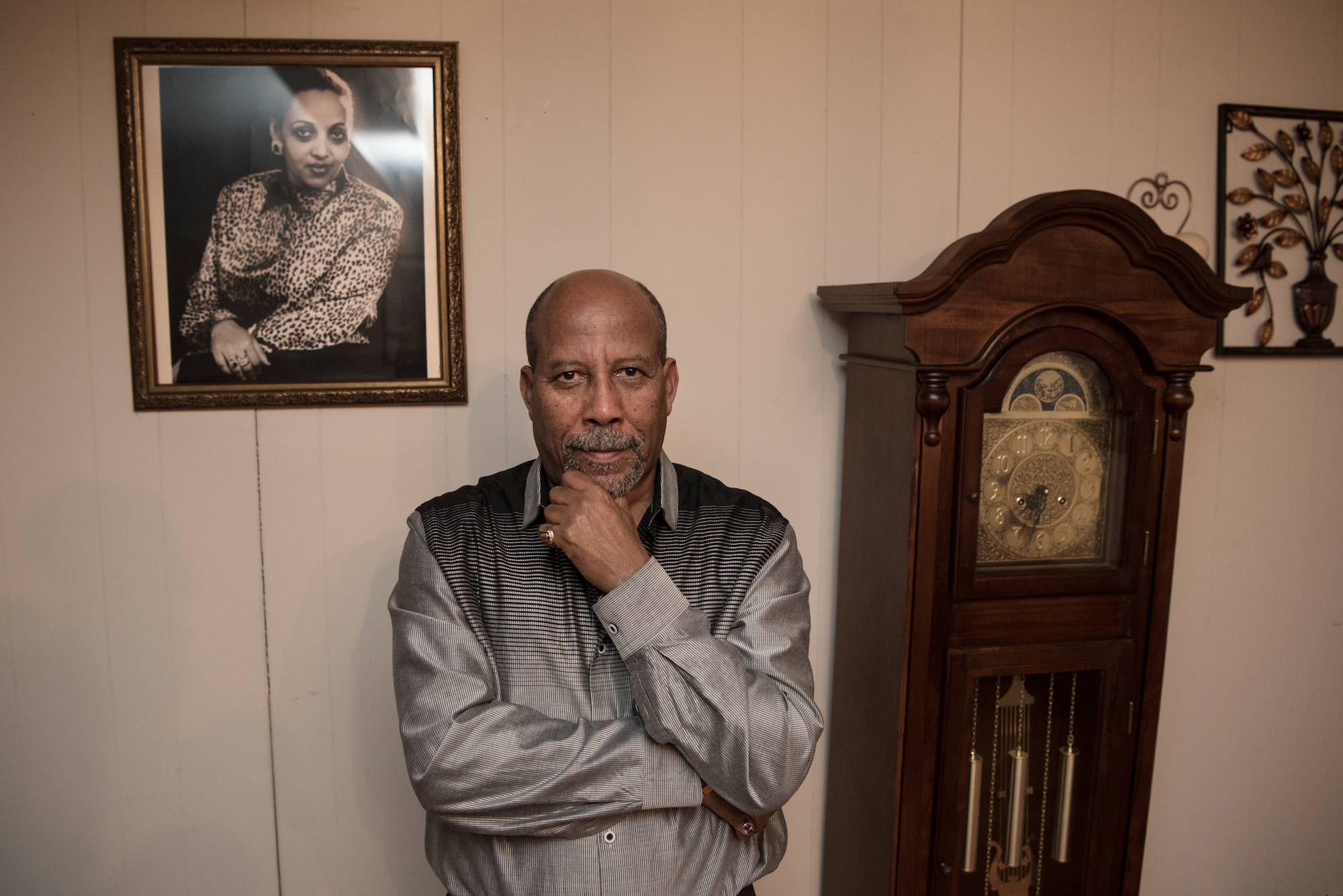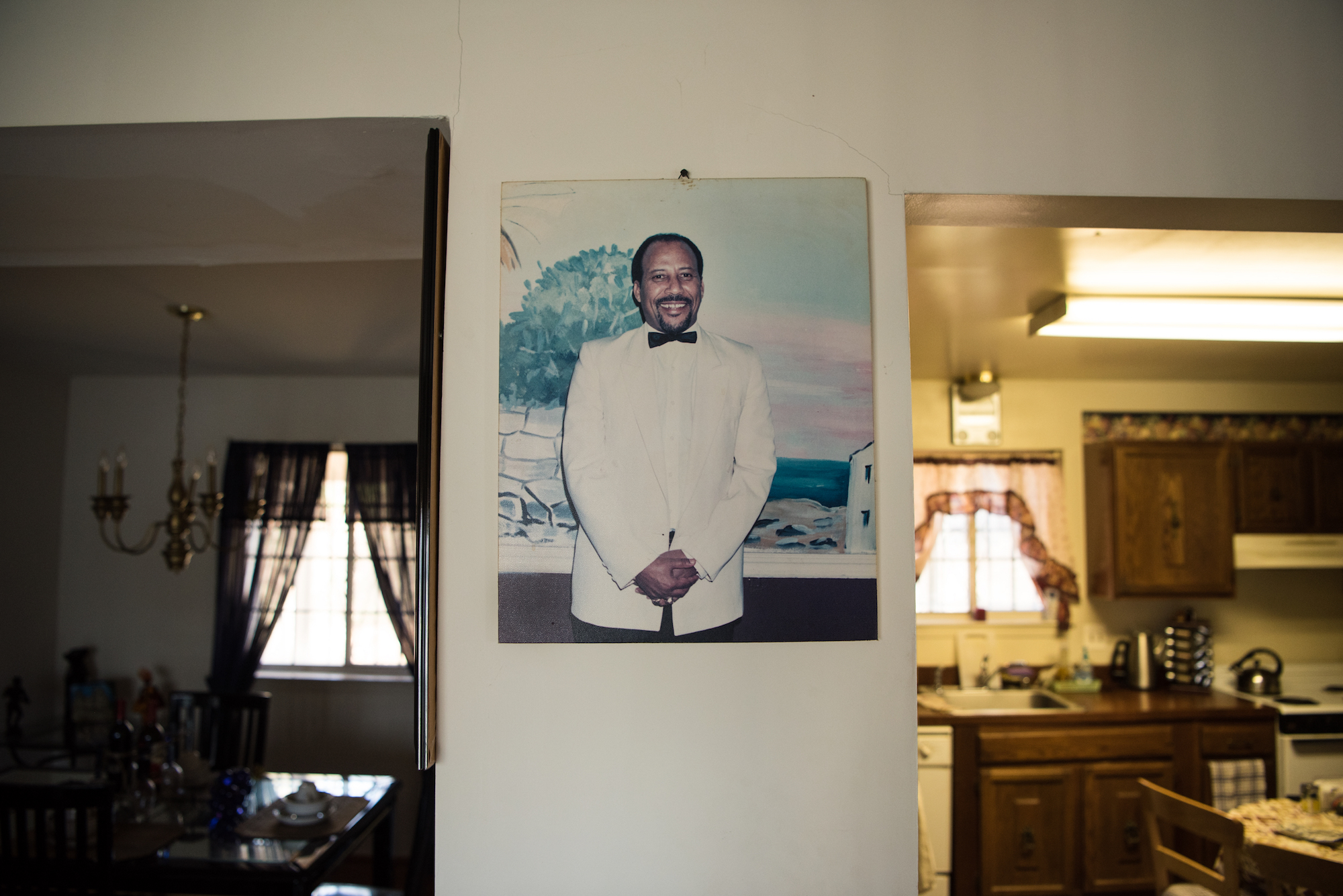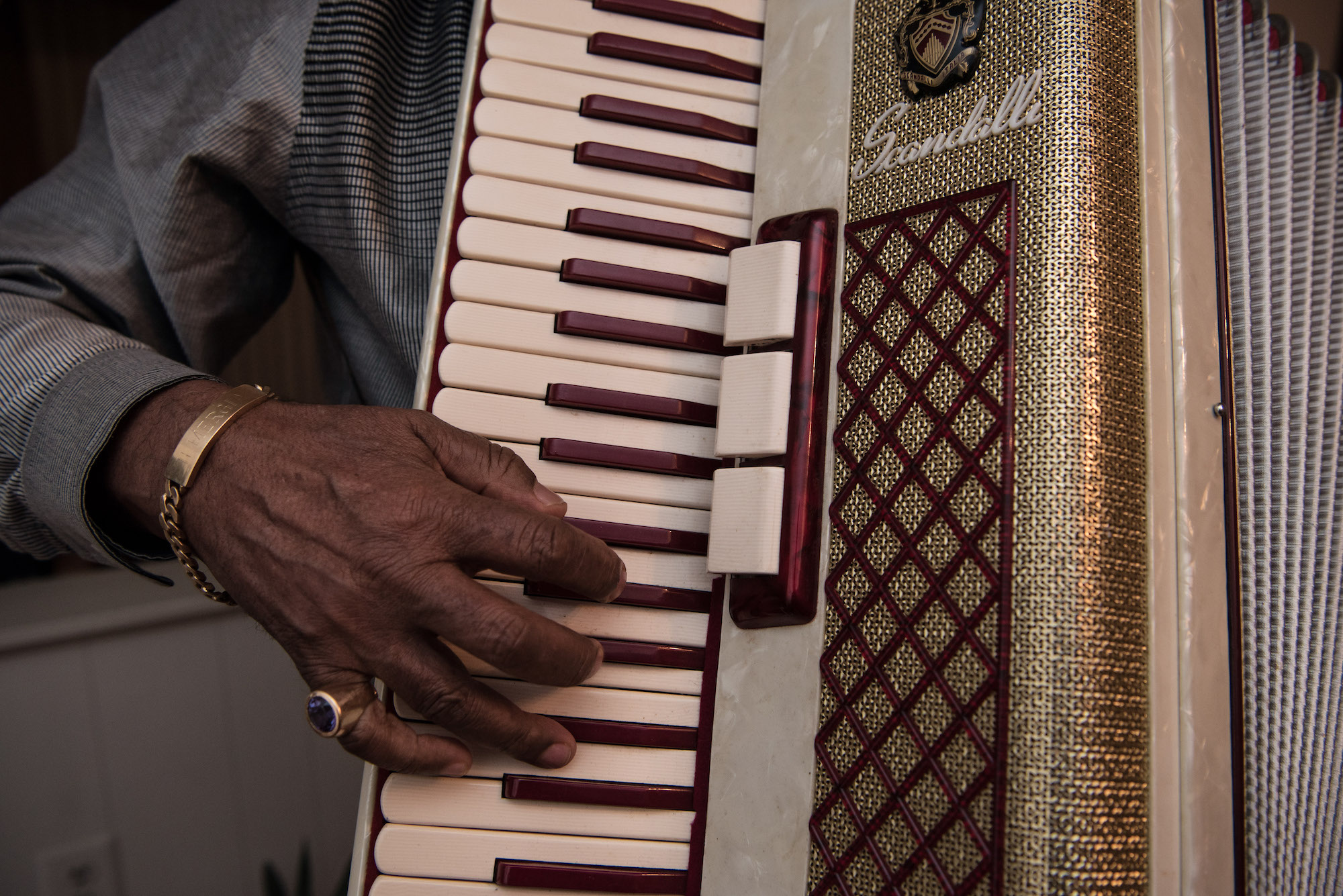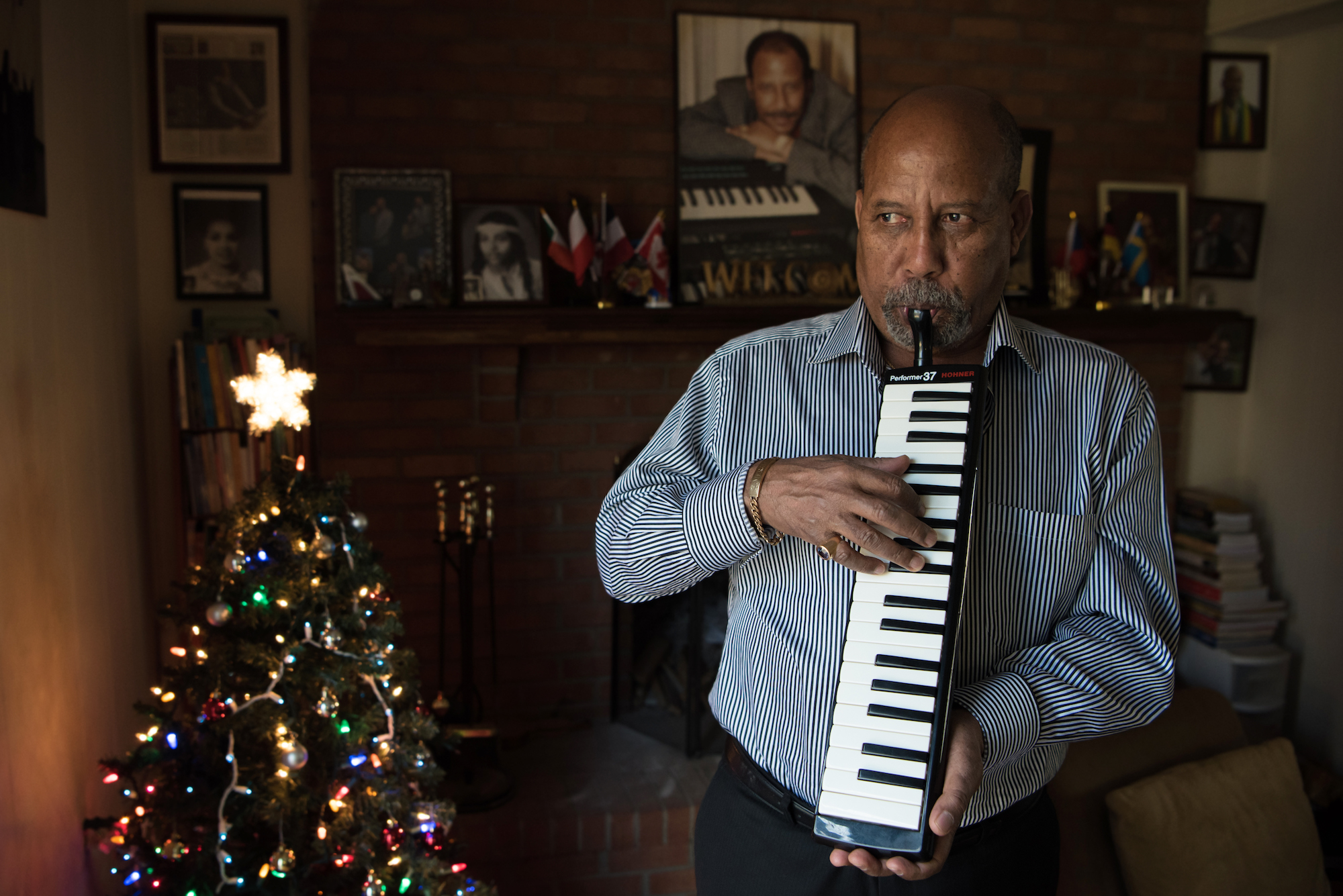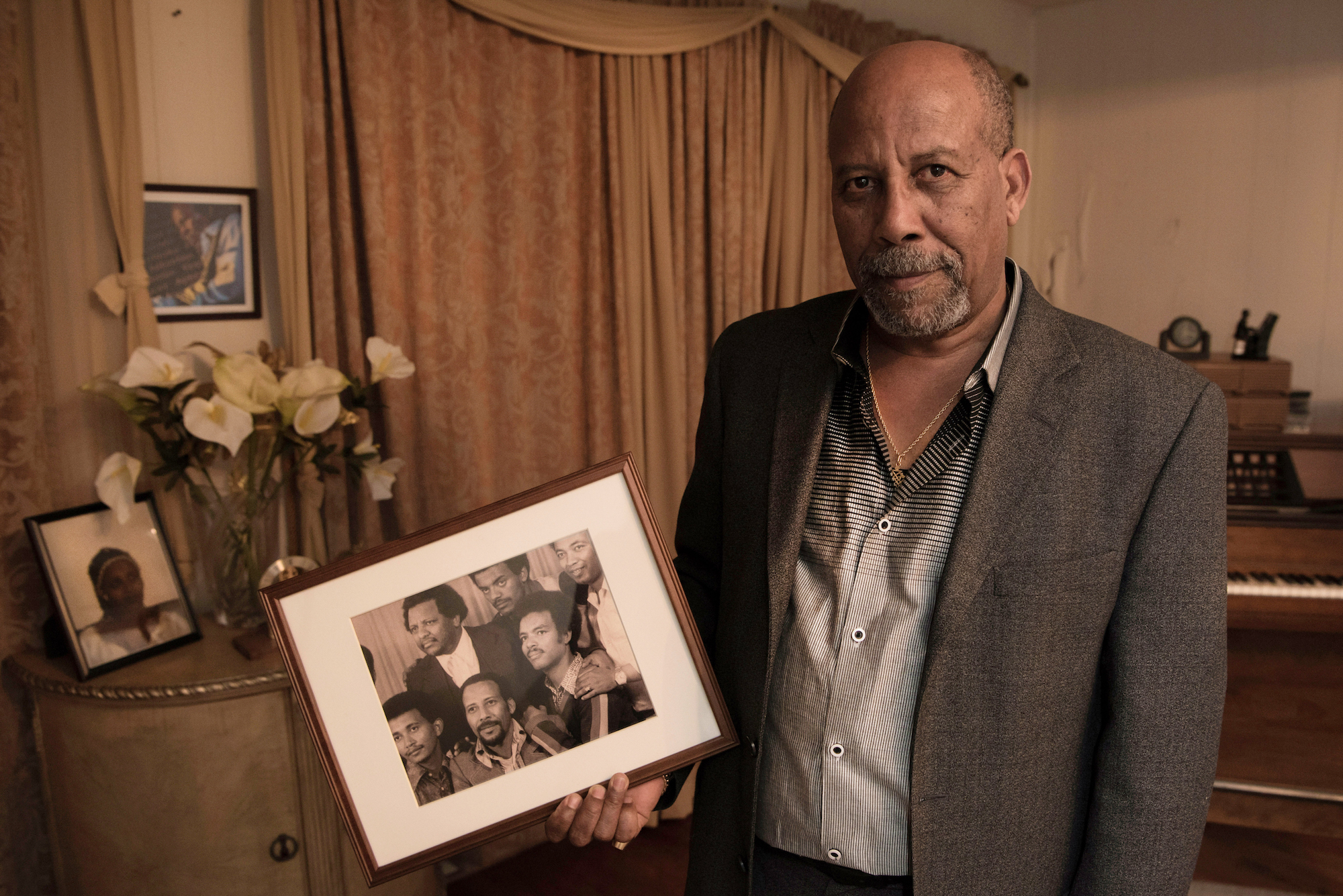By Al Mariam
Holding the Feet (Hooves) of the Wounded Beast to the Fire
Author’s Note: This is the fourth installment of what I initially planned to be a three-part series on prospects for truth and reconciliation in Ethiopia.
![]()
I have explained the purposes of the series in the Author’s Note of Part I and Part IIalong with other issues.
In Part III, I began sketching out the general outlines for a national reconciliation process in Ethiopia, which I hope will eventually evolve into a road map for genuine truth and reconciliation.
In Part IV here, I propose an Ethiopiawinet-centered grassroots reconciliation process. I believe only such a process is likely to heal the wounds that have been inflicted on Ethiopians by the Thugtatorship of the Tigrean People’s Liberation Front for over a quarter of a century, promote long-term national harmony and avert certain civil war.
This series on truth and reconciliation in Ethiopia will continue indefinitely.[1]
I hope other academics like myself and members of the Ethiopian political and activist communities will rise to the occasion and share their views on the viability and practicality of truth and reconciliation lead by the ordinary people of Ethiopia, instead of the self-anointed elites. I should like to believe that the ideas I have presented in the series are sufficiently provocative to spark not only dialogue but also informed debate. I hope my commentaries will serve as lightning rods for discussions of truth and reconciliation.
I hereby challenge my fellow Ethiopian academics and intellectuals to come out of the shadows and take a stand on truth and reconciliation in the Ethiopian sunlight. This is the time to stand up with the Ethiopian people and provide dynamic intellectual leadership. As Edward Said aptly put it:
The intellectual is an individual endowed with a faculty for representing, embodying, articulating a message, a view, an attitude, philosophy or opinion to, as well as for, a public, in public. And this role has an edge to it, and cannot be played without a sense of being someone whose place it is to raise embarrassing questions, to confront orthodoxy and dogma (rather than to produce them), to be someone who cannot easily be co-opted by governments or corporations, and whose raison d’etre is to represent all those people and issues who are routinely forgotten or swept under the rug.
It is time for Ethiopia’s intellectuals to yank the wool rug the T-TPLF has pulled over the eyes of the Ethiopian people for 27 years.
I have no doubts all Ethiopians will eventually reconcile because they are wrapped up in a single garment of destiny called ETHIOPIAWINET. Ethiopiawinet is simply defined as love of the Beloved Ethiopian Community.
The Ethiopian people have weathered far too many storms over the past quarter of a century. But their Ethiopia house is built on solid bedrock. There is little risk of collapse or disintegration. But to make the Ethiopia house a welcoming and comfortable home for all Ethiopians, truth and reconciliation is necessary. In the end, truth shall not hang forever on the scaffold nor wrong remain forever on the throne in Ethiopia.
Ethiopia’s youth (Cheetahs) united can never be defeated!
Ethiopiawinet TODAY, Ethiopiawinet TOMORROW, Ethiopiawinet FOREVER!
“A luta continua… … A vitória é certa.” (“The struggle continues… …victory is certain”.)
================ ================== ==================
Why a phased-in reconciliation process is necessary
In Part III of this series, I argued that any reconciliation process in Ethiopia must be managed in phases. I outlined the elements of a pre-reconciliation planning and preparation process at the end of my commentary in Part III.
I have specific reasons for proposing a phased-in truth and reconciliation process.
First, I am wary the T-TPLF will steal any reconciliation process unless there is a strong grassroots structure that ensures accountability and transparency. A reconciliation process that lacks transparency and accountability is far more harmful that having no reconciliation.
The T-TPLF bosses are grandmasters in stealing processes. They have stolen election processes in broad daylight claiming 99.6 and 100 percent victories. They have stolen negotiation processes with opposition elements time and again. They even steal the legislative process in their own rubber stamp parliament. Unless the T-TPLF is placed on a short leash and hawk-eyed, they will not bat an eye in hijacking any truth and reconciliation process to cling to power.
There is an old Ethiopian saying, “Chaos creates opportunities for thieves.” In the current worsening crises, the TPLF thieves would love to hijack a “reconciliation process” and convert it into one of their dog and pony circus shows, drag it out for as long as they can and in the end trash it all, laughing all along as they consolidate their power.
A recent case demonstrates my point. Over the past year, the T-TPLF bosses tried to hoodwink the donors and loaners by putting on a make-believe show about negotiating with opposition right smack in the middle of their “state of emergency”.
It was all vintage T-TPLF. They began “negotiations” with a handful of “opposition leaders” they handpicked, rounded up a few more wanna be opposition leaders and invited has-been and discredited opposition leaders. But the T-TPLF had egg on its face when the so-called opposition leaders demanded release of all political prisoners. The T-TPLF told them the political prisoners which never existed and then existed in January 2018 no longer existed. It was a case of now you see political prisoners, now you don’t.
There is every reason to believe that the T-TPLF will orchestrate a make-believe, fake, pseudo-reconciliation process to pull the wool over the loaners and donors eyes and play its old zero-sum game. Interestingly, in the face of the February 28, 2018 showdown set by Congress, the T-TPLF is working harder than a one-legged man in a ass kicking contest to prevent a floor vote on H.Res.128.
Second, the only way a genuine reconciliation can occur is with mass participation. Reconciliation cannot be orchestrated between elites in power and those out of power. Reconciliation is a process that should ultimately lead to healing wounds inflicted by crimes against humanity, injustice, corruption and inequality. I suspect there are many who scheme in the shadows to make reconciliation an elite game of window dressing.
I want to make myself crystal clear so that I am not misunderstood. I do not trust elites in charge of the reconciliation process. In studying many truth and reconciliation processes in various countries, I have learned how silver-tongued elites have put on dog and pony reconciliation shows to hoodwink the people into believing they have achieved true reconciliation without giving them much of a meaningful voice in the process. There must be safeguards in place before any reconciliation process is launched to ensure the elites will not hijack the process.
I am mindful that my statement will raise eyebrows and even shock and dismay some of my friends and colleagues in the “elite-dom” who believe they are naturally suited to the office of reconciliation and the unwashed-masses should be seen and not heard in the reconciliation process. Suffice it to say that I have great confidence in the judgment and wisdom of the masses. I am an equal opportunity truth-teller. I speak truth to those in and out of power equally and without reservations.
Third, I believe a pre-reconciliation planning effort undertaken in a grassroots environment will filter out a great many of the riff-raff opportunists, hangers-on, charlatans, 11th hour heroes, rip-off artists, con men and others who lurk stealthily to snatch power in the political chaos.
Fourth, the people have a variety of expectations about a truth and reconciliation process and it is easy for the elites to thwart those expectations through power play games and backroom deals. It is important for all members of society to be well-informed informed on the rules and principles of the reconciliation process to ensure informed, active and vigilant participation.
Fifth, there are no truth and reconciliation quick fixes or short cuts. Truth and reconciliation is a laborious and taxing process. It is a process full of controversies and wrangling. Tough decisions must be made. Only those selected by the people have the fortitude and courage to see it through to the end. Elites prefer a short and sweet reconciliation process, but that cannot uproot the root of bitterness that has spread in Ethiopian society over the past 27 years.
Sixth, last week it became clear to everyone that the T-TPLF is not interested in reconciliation. As I demonstrated in my rejoinder to T-TPLF Underboss Seyoum Mesfin, the T-TPLF is offering a separate peace to the people of Tigray and a separate war and pacification to the rest of Ethiopians.
So, the ultimate question is whether it would be an exercise in futility to even talk about truth and reconciliation when the T-TPLF is preparing to wage war and pacification on the people of Ethiopia!
An Ethiopiawinet-centered grassroots reconciliation process
I reject the idea that for a truth and reconciliation process to occur, governments and leaders must necessarily be involved.
I realize this is a radical position to take and departs completely from country practices of truth and reconciliation over the past two decades. To date, all truth and reconciliation processes attempted and implemented have been the “brain children” of domestic and foreign government officials, elites, and international organizations. I am not aware of a single wholly people-centered and grassroots-based truth and reconciliation process in the world.
In the spirit of Edward Said, I like to “confront the orthodoxy and dogma” of government/elite managed reconciliation process.
I shall argue that the bedrock foundation of any truth and reconciliation process in Ethiopia must be the PEOPLE, the ordinary people who have suffered and continue to suffer the slings, arrows and bullets of outrageous TPLF abuse. The idea and need for truth and reconciliation must first emanate from the wishes, desire and demands of the people. Reconciliation must not be imposed on the people or presented to them as a fait accompli in which they were merely sideline spectators. It is the people who must take a direct and primary role in devising a process to achieve their reconciliation objectives, and not be forced to accept a fabricated process which is alien to them.
I am not suggesting that political leaders and parties, academic, economic and other social elites and institutions do not have a role in a truth and reconciliation process. They do. But I insist their role must be a secondary supporting role to the leading actors, the people, in the truth and reconciliation process.
I believe ultimate sovereignty resides in the consent of the people. The exercise of truth and reconciliation is a sovereign act of the people, not the preferences of self-serving, self-appointed elites who claim to speak on behalf of the people. That is why I believe the only kind of reconciliation effort that has any chance of success in Ethiopia must be rooted in and led by the people.
What we call truth and reconciliation in modern parlance is something Ethiopians, and for that matter African peoples, have been doing for millennia. There are traditions and institutions of truth and reconciliation in Ethiopia that date back for millennia. There are well-established customs and traditions for healing the wounds of conflict among individuals, families or large groups making possible “win-win” outcomes.
Indeed, truth-telling is the basis for reconciliation in Ethiopian and other African traditions. Various scholars have documented the elaborate conflict resolution and reconciliation mechanism used in traditional African settings. Unlike the truth told in the modern settings of commissions and investigative bodies, those held to account in traditional African forums admit their wrongdoings and crimes in public, often tearfully, accept responsibility and accountability, undertake acts of repentance and atonement and beg the mercy and forgiveness of their victims and the community. Wrongdoers may even be required to undergo cleansing rituals.
There are also traditions that enable victims to come to terms with the crimes and losses they suffered at the hands of wrongdoers. These traditions enable victims to forgive wrongdoers and heal themselves.
Playing a central role in the healing and reconciliation process are community elders, faith leaders, relatives and friends. Community-based institutions and leaders promote dialogue, mediate, offer counsel, oversee the reconciliation process and even impose restorative justice where appropriate.
In light of the tested and tried traditional conflict resolution mechanisms for community healing and reconciliation, there is no reason why the ordinary people of Ethiopia cannot establish truth and reconciliation processes within their communities using their traditional forums. They do not need anybody’s permission to do so. They certainly do not need to be dragged around by the nose ring to be shown how to tell the truth and reconcile with each other. They are free to organize informal and formal truth and reconciliation sessions within the framework of their local traditions and practices.
No one knows more about the truth of the crimes against humanity committed against the people than the people themselves. Speaking truth against crimes against humanity requires no commission. The people can establish their own truth and reconciliation process for no other purpose but to bring healing and closure in their communities.
That is why I am arguing for an Ethiopiawinet-centered grassroots truth and reconciliation process.
TOWARDS A CIVIL DECLARATION OF GOOD FAITH COMMITMENT TO TRUTH AND RECONCILATION IN ETHIOPIAWINET
Let the people lead the truth and reconciliation process
I believe it is vitally important for an Ethiopiawinet-centered grassroots truth and reconciliation process to begin with a formal or informal adoption of a declaration of intent and pledge of good faith to pursue national reconciliation through a local community-based truth-finding process.
Declaration are useful tools in a variety of situations. Declaration could be unilateral, bilateral or multilateral and made in a formal or informal statement. But they all share one thing in common. Truth. In the law, a “declaration” is a sworn statement of the truth under penalty of perjury. Declarations may be used to clarify the truth about an existing agreement. Declarations may be used to state facts, proclaim aspirations, make pledges of future actions and set the ground rules for future course of action.
Declarations have been used for historic purposes.
The 1776 American Declaration of Independence inspired the creation of the United States of America. That Declaration boldly proclaiming the principle: “All men are created equal; that they are endowed by their Creator with certain inalienable rights; that among these, are life, liberty, and the pursuit of happiness.” The Declaration is a bedrock foundation for the U.S. Constitution.
Declarations have been used to inspire a revolution.
The 1789 French Declaration of the Rights of Man and of the Citizen inspired the French revolution boldly proclaiming “the natural and imprescriptible rights of man” defined as “liberty, property, security and resistance to oppression”. The 17 articles of the Declaration served as the backbone of the French Constitution of 1791.
Declarations have been used to proclaim the irrevocable heritage of liberty for all human beings.
The 1948 Universal Declaration of Human Rights was the first step in the process of formulating the International Bill of Human Rights, and later became the “mother” of all modern human rights conventions and treaties. Article 13 (2) of the T-TPLF Constitution provides, “The fundamental modern rights and freedoms specified in this Chapter shall be interpreted in a manner conforming to the principles of the Universal Declaration of Human Rights…”
Declarations have been used to stop elections from being stolen in Africa.
The African Union Declaration on the Principles Governing Democratic Elections in Africa, AHG/Decl.1 (XXXVIII), 2002, proclaims “regular elections constitute a key element of the democratization process and therefore, are essential ingredients for good governance, the rule of law, the maintenance and promotion of peace, security, stability and development” and establishes five principles for conducting democratic elections. Guidelines for African Union Electoral Observations and Monitoring Missions were drafted for implementation.
During the May 2010 election in Ethiopia, the T-TPLF claimed to have won 99.6 percentof the parliamentary seats during that election. A 60-person African Union (AU) election observer team led by former Botswana president Ketumile Masire concludedthe “elections were free and fair and found no evidence of intimidation and misuse of state resources for ruling party campaigns.”
Declarations have been used to end sectarian conflict.
The 1993 Downing Street Declaration affirmed the sovereignty of the people of Ireland and established the principle that the people of the island of Ireland have the right to solve their differences without external intervention. That declaration was a key instrument in reaching the Good Friday Agreement putting an end the 30 years of sectarian conflict in Northern Ireland.
Declarations have been used to facilitate reconciliation negotiations.
Before the formal resolution of the conflict in the Darfur region of Sudan, in 2005, the parties to the conflict committed to a Declaration of Principles for the Resolution of the Sudanese Conflict in Darfur affirmed the parties’ commitment to negotiate in good faith and respect previous agreements, humanitarian law and human rights and set the defining principles and issues that shall guide the future negotiations resulting in he the Darfur Agreement.
A 1974 declaration planted the seeds of South Africa’s path to nonviolent change and truth and reconciliation.
The 1974 Mahlabatini Declaration of Faith was the first step in the long process which resulted in a national accord that led to South Africa’s truth and reconciliation. That Mahlabatini Declaration was the first agreement reached by established white and black leaders affirming and charting nonviolent political change in South Africa and emphasizing principles of racial harmony in a multi-racial society, equal opportunity for all, a federal structure and a Bill of Rights.
The 1991 South African National Peace Accord, itself a declaration, helped to create the political space for parties to engage in negotiations to decide the political future of South Africa. It was signed by representatives of more than 40 political organizations and national and homeland governments, and prepared the way for the Convention for a Democratic South Africa (CODESA) which resulted in an agreement for the establishment of an interim government to manage the transition to majority rule and established clear guidelines on the responsibilities of the interim government. The CODESA agreement reflected the principles articulated in the Mahlabatini Declaration.
Towards a civil declaration of good faith commitment to truth and reconciliation on an Ethiopiawinet-centered grassroots truth and reconciliation process
I am calling for the drafting of a civil declaration of good faith commitment to truth and reconciliation in an Ethiopiawinet-centered grassroots truth and reconciliation process. I am especially directing my call to community elders, faith leaders, civil society organizations, human rights activists, advocates and organizers to mobilize people at the grassroots levels and engage them in discussions about the need and approaches to a truth and reconciliation process.
The purpose of the declaration drafting process is to empower ordinary people to take control of their destiny and ensure their children will be in the best position to control their own destiny.
My personal views on the guiding principles for the drafting of a Declaration of good faith on an Ethiopiawinet-centered, people-based grassroots truth and reconciliation process commitment are simple and straightforward:
An Ethiopiawinet-centered grassroots reconciliation represents the desires, wishes, aspirations and mandates of the people of Ethiopia to heal the wounds inflicted upon them for decades. It is not a special closed door backroom deal to be cut between leaders and elites of all stripes whose principal aim is either to cling to power or to grab power from those clinging to power.
In an Ethiopiawinet-centered grassroots reconciliation process, truth-finding will be made by the people, not the elites. Therefore, reconciliation can occur only after truth-finding by the people.
A legitimate reconciliation process could only evolve organically from an Ethiopiawinet-centered grassroots engagement and participatory process.
An Ethiopiawinet-centered grassroots truth and reconciliation discussions must first occur at the local level allowing the people a direct role in articulating and framing the issues for truth and reconciliation. It will be popular true “democratic centralism”. The decisions made by the people will be bining on their leaders.
In an Ethiopiawinet-centered grassroots process, reconciliation can occur among and between the people of Ethiopia, NOT between and among elites competing for power.
Freedom of speech, of press and of assembly are the lifeline of an Ethiopiawinet-centered grassroots process. The people must be able to freely engage in reconciliation discussion and debates in the public square, schools, universities, local market places, churches and mosques, in the military, the civil service and other public and private forums. Journalists must be free to report and communicate on the grassroots efforts and provide forums for discussion and debate. People should be free to peacefully gather, organize and exchange ideas and views.
Because civil society institutions are vital to an Ethiopiawinet-centered grassroots truth and reconciliation process, they must be allowed to function freely.
In an Ethiopiawinet-centered grassroots reconciliation process, the role of political, academic, economic and other elites is to provide technical support to the people and grassroots organizations engaged in reconciliation dialogue and negotiations.
In an Ethiopiawinet-centered grassroots reconciliation process, transparency and accountability structures must be put in place to ensure the grassroots process will not be hijacked by those clinging to power or others trying to grab power from those clinging to power.
A non-negotiable demand of an Ethiopiawinet-centered grassroots reconciliation is the release of all political prisoners.
Is it impossible to have the people of Ethiopia in the driver’s seat in the truth and reconciliation process?
I firmly believe in Miguel de Cervantes’ dictum, “In order to attain the impossible, one must attempt the absurd.”
I do not doubt that there are many out there who think my idea of Ethiopiawinet-centered grassroots reconciliation process is simply crazy and should be summarily dismissed. There will be others who will laugh at them. Still others will be shocked by my unflagging and unwavering faith in the genius and wisdom of the ordinary people of Ethiopia. Let them laugh!
Arthur Schopenhauer said, “All truth passes through three stages. First, it is ridiculed. Second, it is violently opposed. Third, it is accepted as being self-evident.”
I invite all to ridicule my idea about an Ethiopiawinet-centered grassroots reconciliation process and oppose and criticize it. I know in the end they will accept it as self-evident!
Power of truth and reconciliation to the Ethiopian people!
To be continued….
ETHIOPIAWINET TODAY, ETHIOPIAWINET TOMORROW, ETHIOPIAWINET FOREVER!
====================
[1] My truth and reconciliation “series” shall continue indefinitely because I believe I am in a unique position to provide civic education on the subject to my readers and the people of Ethiopia. I have spent considerable time studying the experiences of various countries which have experimented with truth and reconciliation in an attempt to heal the deep wounds in their societies, ensure such wounds will not be inflicted again and move forward in building communities structured on the rule of law.
There is much to be learned from the experiences of other countries and I hope to share the important lessons from those experiments with my readers and all Ethiopians. I believe only truth and reconciliation based on Ethiopiawinet (love) can save Ethiopia from a destructive civil war. My message of truth and reconciliation is aimed at the younger generation of Ethiopians who are standing up to T-TPLF gunfire clothed only in an Ethiopiawinet T-shirt. I hope they will find some useful and constructive lessons in my commentaries which will steel their resolve in their struggle for freedom and against an ethnic apartheid system.
![asd]()
Professor Alemayehu G. Mariam teaches political science at California State University, San Bernardino. His teaching areas include American constitutional law, civil rights law, judicial process, American and California state governments, and African politics. He has published two volumes on American constitutional law, including American Constitutional Law: Structures and Process (1994) and American Constitutional Law: Civil Liberties and Civil Rights (1998). He is the Senior Editor of the International Journal of Ethiopian Studies, a leading scholarly journal on Ethiopia. For the last several years, Prof. Mariam has written weekly web commentaries on Ethiopian human rights and African issues that are widely read online. He blogged on the Huffington post at http://www.huffingtonpost.com/alemayehu-g-mariam/ and later on open.salon until that blogsite shut down in March 2015.

 Xinhua
Xinhua

 Yekatit 12 is a date in the
Yekatit 12 is a date in the  Yemane Ghebre Meskel added that those that condoned Ethiopia’s continue disregard for international law “have no business whatsoever to question or comment on Eritrea’s defense architecture.”
Yemane Ghebre Meskel added that those that condoned Ethiopia’s continue disregard for international law “have no business whatsoever to question or comment on Eritrea’s defense architecture.”
 Lately, several articles caught my eye forced me to react on them. Among those, a commentary titled “Managing Ethiopia’s political crisis” Written by Goitom Gebreluel, Biniam Bedas & Nemera Mamo authors of “Managing Ethiopia’s political crisis” posted at Satenaw.com on February 8, 2018
Lately, several articles caught my eye forced me to react on them. Among those, a commentary titled “Managing Ethiopia’s political crisis” Written by Goitom Gebreluel, Biniam Bedas & Nemera Mamo authors of “Managing Ethiopia’s political crisis” posted at Satenaw.com on February 8, 2018
 TPLF fighters’ monument erected in Mekelle who were told Amhara as enemy of Tigray.
TPLF fighters’ monument erected in Mekelle who were told Amhara as enemy of Tigray. 
 Anole Orom Status aimed at triggering to create conflict with the next generation between Amhara and Oromo population erected by the Oromo hate group.
Anole Orom Status aimed at triggering to create conflict with the next generation between Amhara and Oromo population erected by the Oromo hate group.





 Nebyu Sele Enat and his friend Halwet Sele Enat are barely one-and-a-half-years-old, bright-eyed smiling kids competing for the warmth of their caregiver, Meraf Eyasu.
Nebyu Sele Enat and his friend Halwet Sele Enat are barely one-and-a-half-years-old, bright-eyed smiling kids competing for the warmth of their caregiver, Meraf Eyasu. The heinous rulers of Ethiopia released a letter in January, 20118 that states Teshome Mulatu goes to China for medical care with eleven assistances[1]. During the same period, Bekele Gerba was denied even minimal health care in his country , and he was subjected to further prison terms.[2] These two men hailed from the same region, where the Tigre People Libration Front’s soldiers killed many and ordered one of the victim’s mother to sit on her child’s corpus.[3] Teshome was awarded state-of-the art medical care abroad because he is a loyal servant of the mass killers, but Bekele was denied even the minimal care at home because he speaks for the killed.
The heinous rulers of Ethiopia released a letter in January, 20118 that states Teshome Mulatu goes to China for medical care with eleven assistances[1]. During the same period, Bekele Gerba was denied even minimal health care in his country , and he was subjected to further prison terms.[2] These two men hailed from the same region, where the Tigre People Libration Front’s soldiers killed many and ordered one of the victim’s mother to sit on her child’s corpus.[3] Teshome was awarded state-of-the art medical care abroad because he is a loyal servant of the mass killers, but Bekele was denied even the minimal care at home because he speaks for the killed. This type of scenario is rampant in every region of the country , and it is a test for the origin of conscience and morality. For centuries, thinkers argued whether conscience and morality are innate or acquired traits of the mind . If morality and conscience were acquired, people with similar background should have practiced deeds with similar degrees of conscience and morality. However, deeds have never been uniformly practiced with similar degrees of conscience and morality even by siblings and twins. Some siblings, in fact, sit at the opposite ends of the spectrum of morality. Hence, the question, once more, is: are consciences and morality innate or acquired faculties of the mind? Aren’t the likes of Teshome and Bekele tests for the origin of morality and conscience?
This type of scenario is rampant in every region of the country , and it is a test for the origin of conscience and morality. For centuries, thinkers argued whether conscience and morality are innate or acquired traits of the mind . If morality and conscience were acquired, people with similar background should have practiced deeds with similar degrees of conscience and morality. However, deeds have never been uniformly practiced with similar degrees of conscience and morality even by siblings and twins. Some siblings, in fact, sit at the opposite ends of the spectrum of morality. Hence, the question, once more, is: are consciences and morality innate or acquired faculties of the mind? Aren’t the likes of Teshome and Bekele tests for the origin of morality and conscience?
 An attack on internally displaced persons (
An attack on internally displaced persons (
